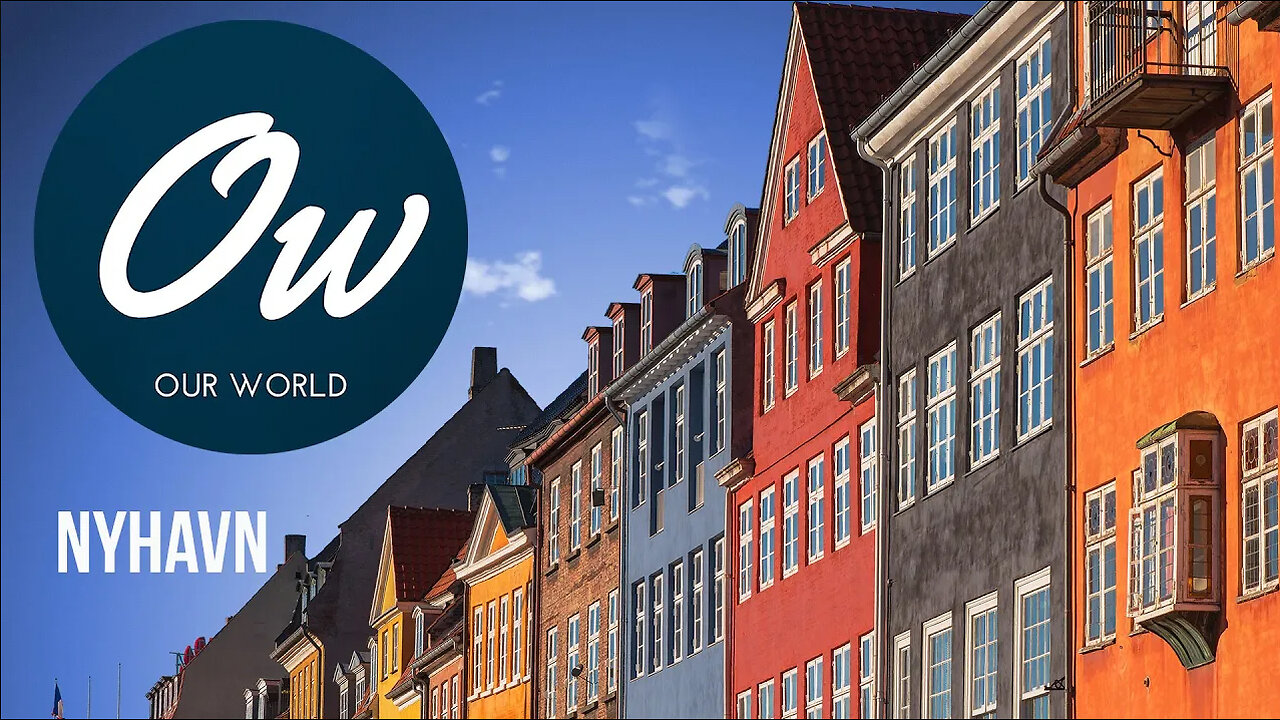Premium Only Content

Nyhavn, Copenhagen, Denmark
Nyhavn, is a 17th-century waterfront, canal and entertainment district, in Copenhagen, Denmark. Stretching from Kongens Nytorv, to the harbour front, just south of the Royal Playhouse, it is lined by brightly coloured, 17th and early 18th century townhouses and bars, cafes and restaurants. The canal harbours, many historical wooden ships.
Nyhavn, was constructed by King Christian V, from 1670 to 1675, dug by Swedish prisoners of war, from the Dano-Swedish War 1658–1660. It is a gateway from the sea, to the old inner city at Kongens Nytorv (King's Square), where ships handled cargo, and fishermens' catch. It was notorious for beer, sailors, and prostitution. Danish author Hans Christian Andersen, lived at Nyhavn for some 18 years.
As ocean-going ships grew larger, Nyhavn was taken over by, internal Danish, small vessel freight traffic. After World War II, land transport took over this role, and small vessel traffic, disappeared from the Port of Copenhagen, leaving Nyhavn, largely deserted of ships.
In the mid-1960s, the Nyhavn Society was founded, with the aim of revitalising the area. In 1977, Nyhavn was inaugurated, as a veteran ship and museum harbour, by Copenhagen's Lord Mayor, Egon Weidekamp. In 1980, Nyhavn quay , was pedestrianised; it had been used as a parking area, in the past years, which had coincided, with a dwindling of harbour activities. Since then, it has become a popular spot for tourists, and locals alike, serving the function of a square, according to architects, Jan Gehl and Lars Gemzøe.
The northern side of Nyhavn, is lined by brightly coloured townhouses, built with wood, bricks, and plaster. The oldest house, at Number 9, dates from 1681. The southern side of Nyhavn, has lavish mansions lining the canal, including Charlottenborg Palace, at the corner of Kongens Nytorv.
-
 29:52
29:52
The Why Files
8 days agoThe Disappearance of Peter Williamson | Lightning Pants from Another Dimension
33.9K69 -
 8:24
8:24
Russell Brand
11 hours agoWhat They Accusing Elon of Now Is OUTRAGEOUS
49K72 -
 1:34:55
1:34:55
Glenn Greenwald
11 hours agoMore Sinister USAID Programs Emerge; Rumble Returns to Brazil as its Chief Censor is Warned of Arrest; Why CFPB Protects Consumers With Matt Stoller | SYSTEM UPDATE #404
117K165 -
 2:49:19
2:49:19
Danny Polishchuk
10 hours agoAmerica Is No Longer The World's Piggy Bank + Guest Richard Grove | Low Value Mail Live Call In Show
84.6K4 -
 50:28
50:28
Donald Trump Jr.
12 hours agoCutting Gov’t Waste, One Penny at a Time. Interview with Author Lee Smith | Triggered Ep. 215
168K123 -
 1:44:35
1:44:35
Flyover Conservatives
1 day agoThe Shocking Truth About Modern Medicine & The Ultimate Health Hack - Part 1 - Deep Dive: Drs. Mark and Michele Sherwood | FOC Show
46.2K3 -
 3:18:18
3:18:18
I_Came_With_Fire_Podcast
10 hours ago"Mead & Mental Health" with ICWF Podcast & Vikings, Outlaws, & Cowboys Podcast
21.3K4 -
 1:32:15
1:32:15
Anthony Rogers
6 hours agoBeating Children (At Video Games)
24.9K1 -
 1:46:19
1:46:19
megimu32
8 hours agoON THE SUBJECT: SUPER BOWL FOLLOW UP!
66K11 -
 59:26
59:26
The StoneZONE with Roger Stone
7 hours agoWill New York Democrats Steal the U.S. House? | The StoneZONE
70.9K8